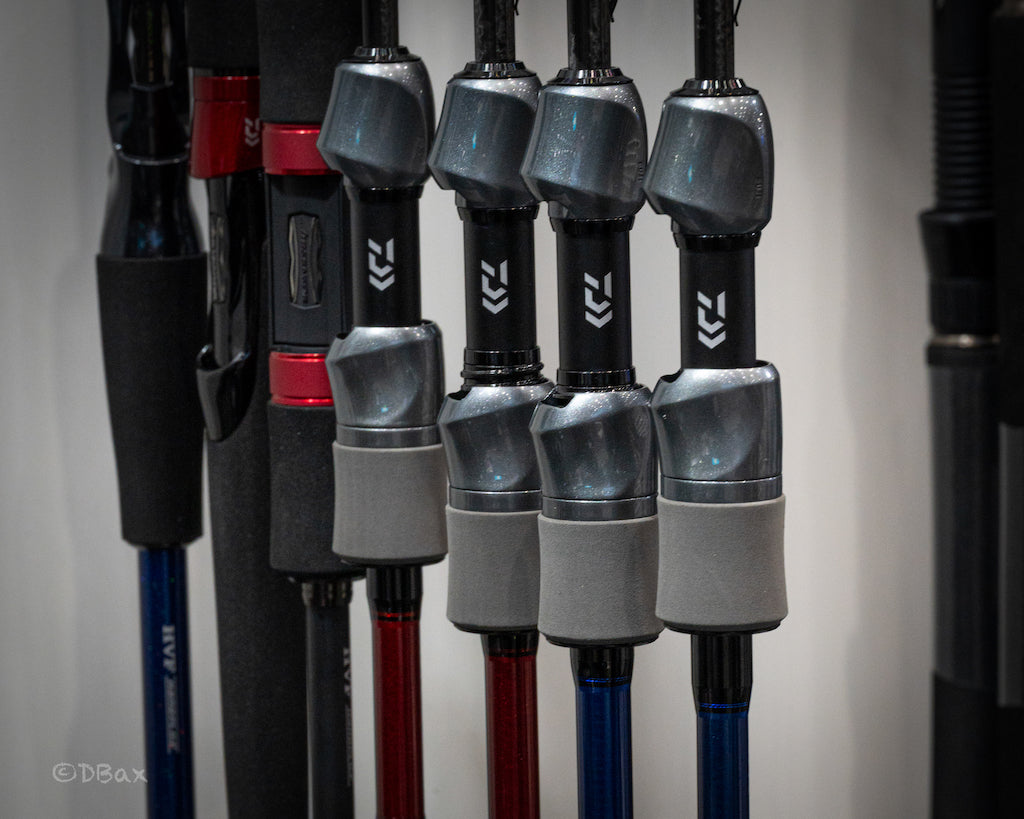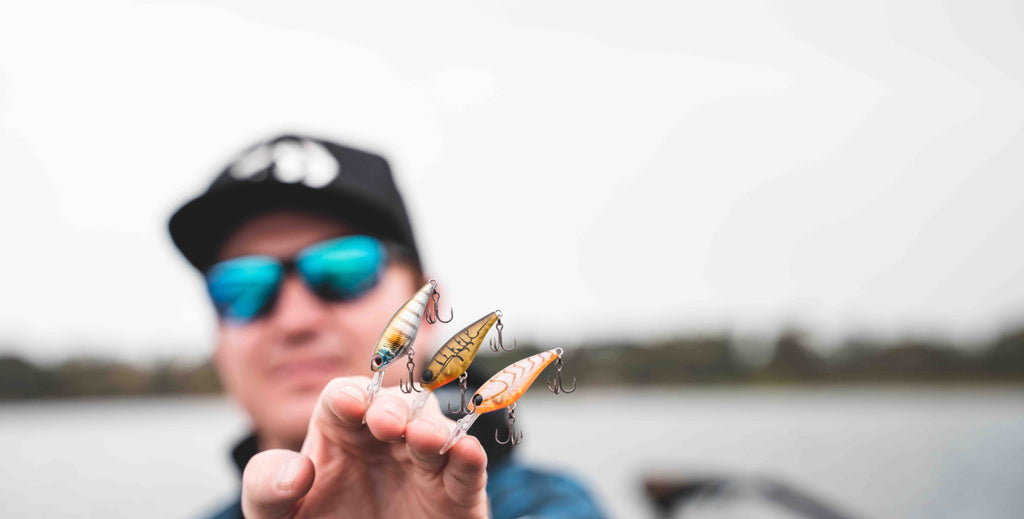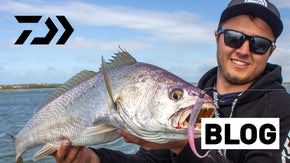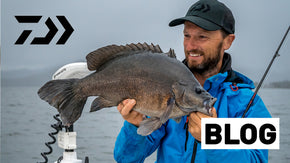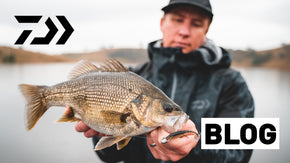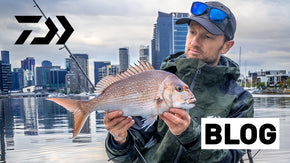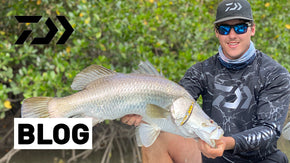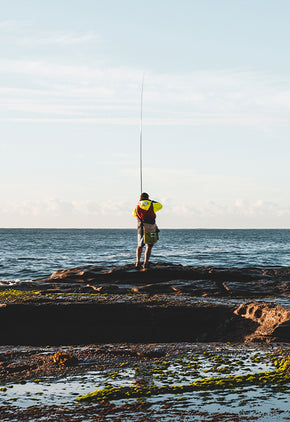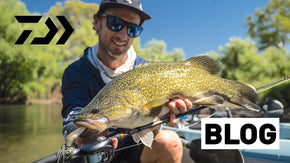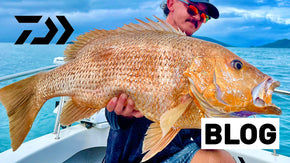Posted 06th October 2023
How to Catch Yellowbelly: A complete guide
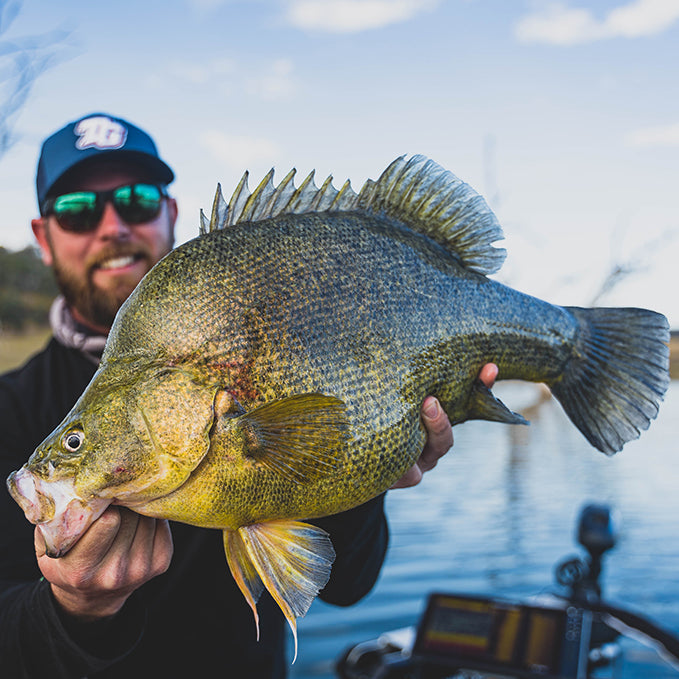
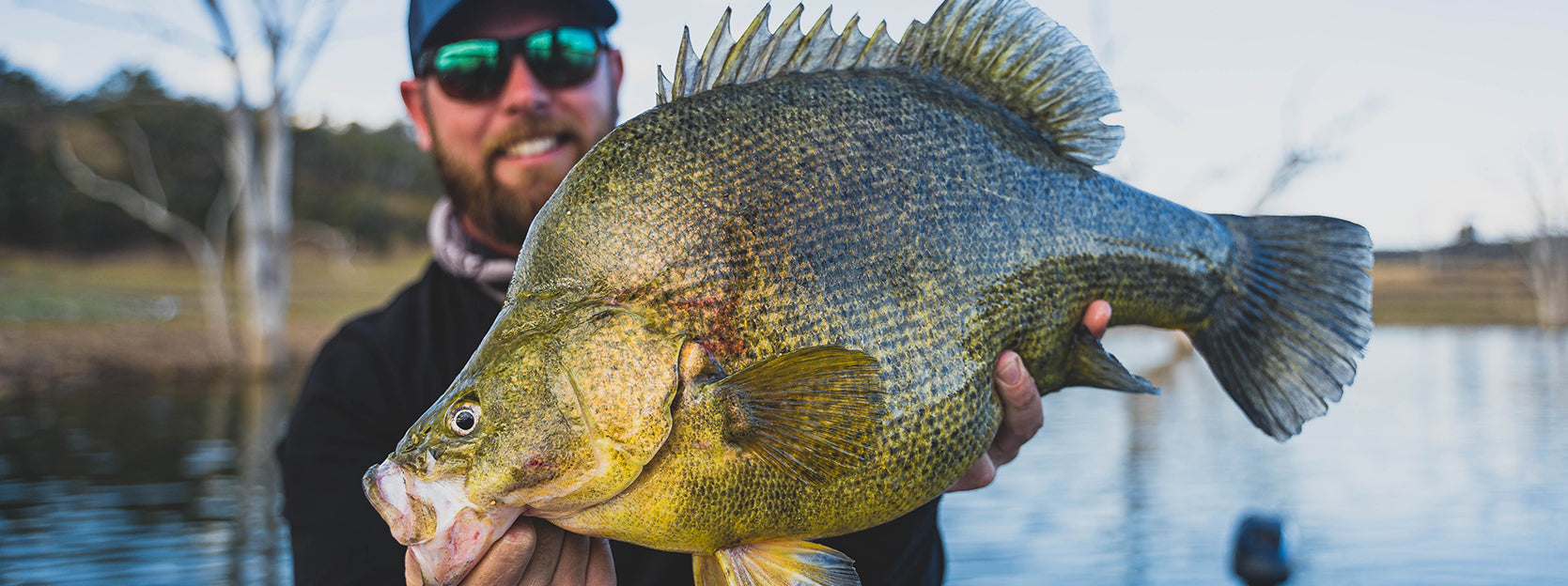
By Robert Thornton
The freshwater fishing scene in Australia is vast and highly diverse, however most YouTube videos, online blogs and other social media content tends to focus on just a few main species. Bass, Murray cod, trout and more recently impoundment barramundi tend to dominate our media spaces and receive ample attention in the fishing tackle market. Any experienced freshwater enthusiast will know that this is merely scratching the surface though, and the creatures that they eclipse are just as, if not more fascinating. Golden perch, or yellowbelly, are one of those fascinating creatures. Apart from being hard hitters and strong fighters, they also offer a great fishing option during Murray cod closure and are agreeable table fare for those living out west.
Many anglers, both seasoned and novice, will know about this fish, what they look like and roughly where they inhabit. But there is far, far more to yellowbelly, or ‘yellas’ (as they are known by their admirers), than most people know. If you want to start targeting them specifically, it is well worth your time getting to know a bit more about them.
This blog will hopefully fill in some of your knowledge gaps around this species, and then we will get into the tackle and techniques that get them to bite. Let’s jump in!

The golden children
These fish go by a few names, but the main ones are golden perch, goldens, yellowbelly, yellas and callop (the latter tends only to be used in South Australia). There are also a multitude of indigenous names as well.
They have a very striking appearance, and vary a lot in colouration, ranging from pale silver and almost completely white, to a rich yellow/gold or bronze, and sometimes almost completely black! Their environment has a lot to do with their colouring, with paler fish often inhabiting more murky water and darker fish coming from clearer systems.
Most anglers understand yellas as a fish native only to the vast Murray-Darling Basin, but there are at least three distinct populations. The Murray-Darling strain inhabits virtually the entire basin, which covers southeast SA, northern Victoria, the majority of inland NSW and southern inland Queensland. A second strain inhabits the Lake Eyre Basin, which is fed by inland-flowing rivers and creeks coursing across the deserts of southeast NT, northeast SA, northwest NSW and much of western Queensland. A third subspecies is native only to the Fitzroy-Dawson system in Central Queensland.
All these systems contain sprawling networks of mostly slow-flowing lowland streams that experience extreme drought and flood cycles.
It’s not officially known whether these strains are sperate species or not, and the introduction of yellas (mostly Murray-Darling strain) outside their natural range has made any further studies about their natural range difficult.
Over the 19th and 20th centuries their numbers declined sharply, particularly in the Murray-Darling. Overfishing, poor land management and the construction of dams and weirs that restricted water flow and migration took a toll on golden perch numbers, along with many other native fish.
Hatchery breeding since the 1970s has been responsible for bringing certain yellowbelly populations back from the brink and allowed them to be introduced outside their natural range to provide food and sport for anglers living in more coastal areas.
These days golden perch are found in every mainland state and territory and can be caught in a range of environments, and it’s likely their tolerance to harsh, semi-arid climates that have allowed this to happen. Indeed, these are a tough fish, but the lesson here is that even the toughest of animals can’t survive careless human expansion. Conservation needs to core value for progress.

Striking gold
Finding areas that harbour these fish isn’t particularly hard, however one factor making targeting yellowbelly on lures difficult is their tendency to live alongside other predatory species, often in the same habitat and competing for similar food sources. The subtle differences in their habits, however, provide key information if you want to specifically chase yellas.
Yellowbelly are very temperature-driven, and in their natural range yellowbelly inhabit the deeper pools in slow-flowing streams, often where there is ample structure in the form of fallen timber, undercut banks, weed, root balls or rocks to escape the heat. In more arid areas, a single bankside tree providing shade at the water’s edge can be enough to concentrate them when the sun is beating down.
They will move away from these zones periodically when it’s cooler to soak up whatever sun they can get. During these times they will sit motionless in the sun-warmed shallows, or near the surface beside timber, weed or rocks that radiate heat from the sun.
Keeping this in mind, you will generally find yellas in shallower water or closer to the surface near structure through spring and early summer, however as it heats up they will tend to descend to the base of large structures where the water is cooler. Through the cooler months, they will position themselves in sun-warmed areas if they need the energy to feed but will often sit in deeper water and move around as little as possible to conserve energy.
When you turn up to a river, creek or dam it may take a little while to figure out where the yellas are sitting on any given day, but once you catch one or identify a few ‘bites’ in one area, targeting similar areas should put you into more. Bear in mind that they will adjust their position throughout the day to suit their comfort levels, but generally they won’t move far. Gradually moving deeper as the sun increases its power is usually a good ploy if you’re not sure. In short, you don’t necessarily want to find the right structure or spot, but rather the right temperature.
Yellas on lures
Bait fishing is an immensely productive way to catch these fish, and while this blog won’t be covering that, examining popular baits reveals a lot of valuable information when choosing lures for these moody carnivores.
Yellas are an aggressive species, however they don’t have the same relative mouth size of species like Murray cod, trout cod and southern saratoga that occur alongside natural populations. Goldens have to be opportunistic feeders like their big-mouthed stream fellows, but they prefer smaller prey. Small yabbies, freshwater shrimp and earthworms are renowned baits for yellas, however they are also known to chow down on aquatic insects, small fish and occasionally frogs and terrestrial insects.
Applying these ideas to lure fishing, it’s clear that a range of small to medium lures will work on yellowbelly, so let’s take a look at some different lure types and how to get the most out of them.

Hardbodies
Whether trolling in a dam, sight-casting to a fish sitting in 2ft of water or cranking some deep structure in one of our western rivers, hardbodied lures are a must-have for yellas. Daiwa’s range of hardbodies can help you cover many bases.
The Steez RPM Crank Mid-10 is a fantastic allrounder, suitable for casting and trolling. This lure is at its best for yellas around heavy wooded or rocky areas around the 2-3m mark, as this lure will bump along most hard structure without getting hung up and gives off a wide wobble that yellas in feeding mode just love. This is an excellent springtime bait in rivers and shallower dams.
The Infeet Spike 44EXDR is the perfect hardbody for when the sun is out, the yellas go deep and the bite is tough. Diving to around 4m, it’s ideal for searching the depths of a major riverbend or steep bank in a dam and has been optimised to run at very slow speeds. They also work well as a trolled lure in dams and rivers.
Finally, the Double Clutch series, particularly the 60 and 75SP, are a great tool for when golden perch are sitting in shallow water or high in the water column. Their small and skinny profile makes them the perfect little inoffensive snack when the yellas are trying to warm up, and being a suspending lure they give the yellas plenty of time to decide whether they want to eat it or not.

Soft plastics
These days a lot of yellowbelly are caught on soft plastics, however catching yellowbelly on soft plastics requires a certain approach. Like most luring techniques, knowing where and when to use different types of soft plastics is the key to success.
Small grub plastics are proven performers, and the Bait Junkie 2.5 Inch Grub, particularly in darker colours, is a great general soft plastic for yellas. These lures work well when slow-rolled vertically beside standing timber in dams (a great spring and summer technique), prospecting along a weed edge, and also sight-casting any fish trying to warm up, especially if rigged on a super light jighead.
The new 3” Prawn from the Bait Junkie stable is another option to have on hand, especially when you consider that shrimp make up a large part of their diet in most waters. Rigging this plastic on a standard jighead or weedless, the Prawn is a great tool for when the yellas are on the bite and looking for the most protein-rich food source they can find. Working them with little twitches of the rod tip will make the tail flick like a real shrimp, and will no doubt excite any nearby yellowbelly.
Slowing things down a bit, the Risky Critter should be called on when the yellas go deep and they shut down. Rigging them weedless will allow you to probe the gnarliest depths of any structure. With weight around the tow point (either with a chin-weighted worm hook or by adding weight yourself) the Critter will sit tail-down with the claws and legs wafting around – just like a yabby defending itself. This is definitely an awesome plastic to have if things get tough.
Vibration baits
Given that vibes and blades sink quickly and are not weedless, they aren’t the best tool for snaggy rivers, but rather they are ideal for deeper areas in dams, particularly if fish are found schooling in open water or beside structure. This is a common scenario in summer.
The Steez Metal Vibe is a small blade that can be dropped quickly to the bottom to target fish seen on a sounder. The small sticky BKK trebles will mean that even tentative bites have a high chance of resulting in a hook-up. If you find yourself fishing a similar scenario but with a bit of weed or timber nearby, retro-fitting some Assist Hooks to the vibe can help a lot. The small assist hooks can be flicked easily off any weed or skinny branches should the lure get caught up, and still offer great hook-up potential for tentative biters. As a bonus, the hooks look a bit like feelers and tendrils and only serve as added attraction.
If you’re looking to target larger yellas, or want to make the most of those times when they are really on the chew and looking for a big meal, the Steez Soft Shell is a soft vibe like no other. Designed to look like a crayfish, this lure has realistic patterns and two claw-like appendages. It’s soft, so fish that bite and don’t hook-up will often come back. Being a soft vibe, it vibrates strongly when hopped of slow-rolled, and it comes with several hook configuration options that can be adjusted to suit a variety of applications.

Spinerbaits and chatterbaits
These lures are probably the best things to throw in any given waterway if you don’t know where to start. Spinnerbaits in particular are very good for this, as they are relatively snag-resistant, and their design means they can attract attention from afar.
The Steez Spinnerbait and Asroc Spinnerbait are a willow and Colarado bladed spinnerbait respectively, and come in 3/8 and 1/2oz weights, making them the perfect spinnerbait for making long casts and bumping aggressively into wooded and rocky areas.
For a more compact and finesse spinnerbait option, the Jig Spinner SS is a jighead and spinner blade package that features a weed guard and can be rigged with any soft plastic. Coming in 5, 7 and 10g weights, it’s the perfect searching tool for smaller waterways like creeks and small urban lakes.
Finally, the Steez Cover Chatter is great to have rigged when the barometer is up and the yellas are feeding hard, or when you’re confronted with dirty water and you need something to stand out. They come in 1/4 and 3/8oz weights, however they sink faster than spinnerbaits and generally cast better for their weight, and so they can easily be used in the same or similar water to the spinnerbaits. The thin fibre weed guards will allow you throw this lure into heavy cover if the situation requires you to.
Go for gold
If you want to go for gold, chances are you live within easy reach of a few yellas! Many are taken as by-catch, but specifically targeting them will reveal what a great sportfish they are, very much worthy of the same praise as Murray cod, saratoga, bass, barramundi, and other stars of the fresh.

 Contact Us
Contact Us Blog
Blog About
About
